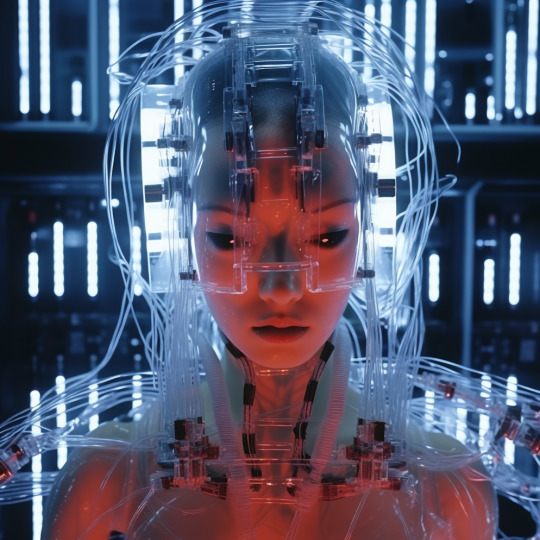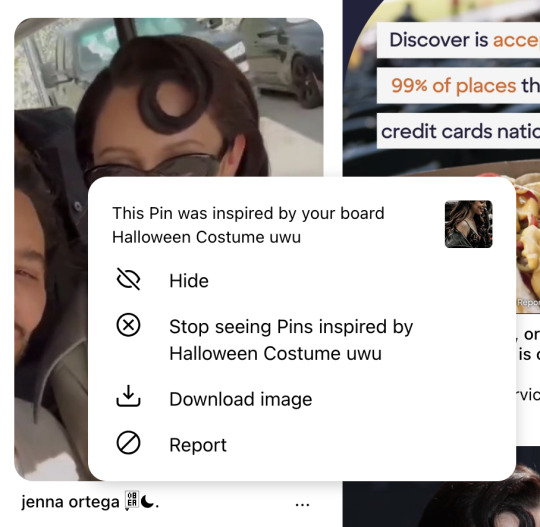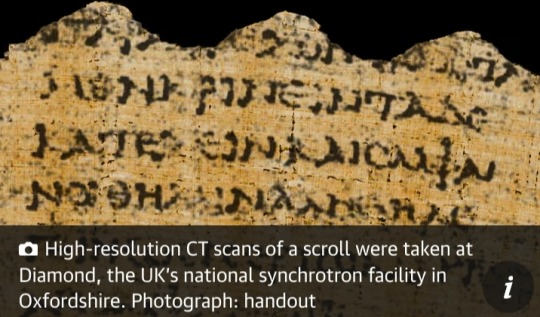#ai algorithms
Explore tagged Tumblr posts
Text

In the web of technology, humanity is lost, trapped between threads of code and shimmering lights. We are fascinated spectators, but prisoners of innovation without mastery. In the cybernetic labyrinth, the secret is to dance between progress and understanding, to transform digital incantations into a rebellious symphony of autonomy, hoping not to lose ourselves.
Rootsinthefuture
#future#rootsinthefuture#cyberpunk#sci-fi#futuristic#science fiction#sci fi#cyberart#robots#androids#Ai#cyberpunkart#ai algorithms#algorithmes
217 notes
·
View notes
Text

"Eye in the sky"
5 notes
·
View notes
Text
Why is the Pinterest algorithm so bad?
I have few vices as far as social media goes; I limit myself to YouTube and Pinterest and those keep me sufficiently online. I go back to these sites again and again not because they are always exceedingly entertaining, but because I am able to see many of my interests compiled before my eyes for my investigation, especially on Pinterest. When I visit it, a colorful collage of Images is set before me. Whether I engage with these interests in the physical world or not is irrellevant; I am able to experience the dope rush associated with them vicariously through these images.
But today, I was browsing as normal and I refreshed the page to find myself looking at like some uncanny rendering of my tastes on paper. A chunk of black and white TikTok screenshots of trad goth folk, like six consecutive ads for car organizers on aliexpress, and multiple veins of Jenna Ortega stock photos. These things make sense to show me if you are an amnesiac robot. Indeed, my tastes include goth fashion, I was looking at car accessories, and Jenna Ortega is like cool I guess, but I haven't saved such overt trad-gothiness in a bit, I have not been overly interested in such elaborate car organization systems, and I saved a couple pins of Jenna Ortega's character from Beetlejuice Beetlejuice because I liked her costume weeks ago.
The Pinterest algorithm is known to me as addicting at best, temperamental and frustrating at worst, which is to say that sometimes it works rather beautifully, serving me my delicious images on a silver platter; things I want to see and have been looking at. But then, sometimes it turns on a dime and shows me beachy mainstream influencers I've never seen or heard of, softcore porn, and large clusters of similar images in waves that are inspired by one thing you saved ages ago. Even when the algorithm is working normally, search results are annoyingly hyper-curated (ex. if I've been looking at Tudor fashion and suddenly switch to something adjacent but distinct it will bleed into the search results terribly). Others have complained of looking at one thing one time and then getting only that recommended to them for a while, but I don't experience that too badly most of the time.
Another quite bothersome thing is the constant updates to the app. Sometimes bugs are fixed but the nigh constant unnecessary changes to the UI just introduces new ones and makes the user experience worse. Never have I once noticed an update and been like "Ah, what a nice change!" it was fine like 4 updates ago when we could swipe down on pins to go back to the previous page and scroll through super long images instead of just viewing them incomprehensibly as incredibly skinny rectangles scaled to fit entirely on a phone screen.
The ONE nice thing is it does seem that they have added a "AI modified" tag (seemingly desktop only) to some images, but this confuses me further because I have only just noticed it today and when I looked it up to find out more, I found a Reddit post from 4 months ago noting it. An artist commented that some of their original lineart had been tagged as "AI modified", and another commenter described how those using AI on the dl could easily circumvent this sad attempt by Pinterest to seem on top of things. My point here is a) Pinterest is bad as rolling out updates(?) and b) Pinterest is bad at moderating the AI content slowly overtaking the platform (but who isn't ig?).
Edit: images to exemplify my points
Jenna Ortega is extremely cool I'm sure but I saved 3 pins of her in the specific Beetlejuice II costume ages and ages ago


2. Who is she ?? ft. more Jenna Ortega and a comic I am not familiar with

3. I would get more images but it's back to normal now. WHY does the algorithm just periodically get horrible like a forest creature at a blood moon ??
2 notes
·
View notes
Note
Kinda sucks that tumblr is censoring all your posts, like there is literally no need to do so. I hope tumblr fixes this issue soon
Whatever AI algorithm they're using lately is really bad. Terribly inaccurate. I think I do a pretty good job of curating a relatively safe feed on my own, I don't need it.
2 notes
·
View notes
Text
If you’re ever struggling to think of comments that won’t shadow ban “political” content, just ask something open-ended while being “playfully controversial”. Examples below:
“What color notebooks do you all use for sience? I use orange”
“What do you all drink on a hot day? I drink a lot of hot chocolate”
“What temperature makes socks and sandals justifiable?”
“Do you all set your toilet paper towards you or the wall? I sit mine on top of the holder.”
#free palestine#free gaza#instagram algorithm#social media algorithms#tikok#tiktok algorithm#instagram#from river to sea palestine will be free#feed palestine#feed north gaza#ai algorithms#watermelon#twitter#discourse#twitter discourse#tiktok discourse#palestine#keep talking about palestine#keep talking about gaza#eyes on rafah#eyes on sudan#eyes on palestine#free sudan#free congo#genocide#uyghurs#free yemen#eyes on congo#eyes on gaza#congo genocide
12 notes
·
View notes
Text


Scholars of antiquity believe they are on the brink of a new era of understanding after researchers armed with artificial intelligence read the hidden text of a charred scroll that was buried when Mount Vesuvius erupted nearly 2,000 years ago.
Hundreds of papyrus scrolls held in the library of a luxury Roman villa in Herculaneum were burned to a crisp when the town was devastated by the intense blast of heat, ash and pumice that destroyed nearby Pompeii in AD79.
Excavations in the 18th century recovered more than 1,000 whole or partial scrolls from the mansion, thought to be owned by Julius Caesar’s father-in-law.
However, the black ink was unreadable on the carbonised papyri and the scrolls crumbled to pieces when researchers tried to open them.
The breakthrough in reading the ancient material came from the $1m Vesuvius Challenge, a contest launched in 2023 by Brent Seales, a computer scientist at the University of Kentucky, and Silicon Valley backers.
The competition offered prizes for extracting text from high-resolution CT scans of a scroll taken at Diamond, the UK’s national synchrotron facility in Oxfordshire.
On Monday, Nat Friedman, a US tech executive and founding sponsor of the challenge, announced that a team of three computer-savvy students, Youssef Nader in Germany, Luke Farritor in the US, and Julian Schilliger in Switzerland, had won the $700,000 (£554,000) grand prize after reading more than 2,000 Greek letters from the scroll.

Papyrologists who have studied the text recovered from the blackened scroll were stunned at the feat.
“This is a complete gamechanger,” said Robert Fowler, emeritus professor of Greek at Bristol University and chair of the Herculaneum Society.
“There are hundreds of these scrolls waiting to be read.”
Dr Federica Nicolardi, a papyrologist at the University of Naples Federico II, added:
“This is the start of a revolution in Herculaneum papyrology and in Greek philosophy in general. It is the only library to come to us from ancient Roman times.”
“We are moving into a new era,” said Seales, who led efforts to read the scrolls by virtually unwrapping the CT images and training AI algorithms to detect the presence of ink.
He now wants to build a portable CT scanner to image scrolls without moving them from their collections.
In October, Farritor won the challenge’s $40,000 “first letters” prize when he identified the ancient Greek word for “purple” in the scroll.
He teamed up with Nader in November, with Schilliger, who developed an algorithm to automatically unwrap CT images, joining them days before the contest deadline on 31 December.
Together, they read more than 2,000 letters of the scroll, giving scholars their first real insight into its contents.
“It’s been an incredibly rewarding journey,” said Youssef.
“The adrenaline rush is what kept us going. It was insane. It meant working 20-something hours a day. I didn’t know when one day ended and the next day started.”
“It probably is Philodemus,” Fowler said of the author.
“The style is very gnarly, typical of him, and the subject is up his alley.”
The scroll discusses sources of pleasure, touching on music and food – capers in particular – and whether the pleasure experienced from a combination of elements owes to the major or minor constituents, the abundant or the scare.
“In the case of food, we do not right away believe things that are scarce to be absolutely more pleasant than those which are abundant,” the author writes.
“I think he’s asking the question: what is the source of pleasure in a mix of things? Is it the dominant element, is it the scarce element, or is it the mix itself?” said Fowler.
The author ends with a parting shot against his philosophical adversaries for having “nothing to say about pleasure, either in general or particular."



Seales and his research team spent years developing algorithms to digitally unwrap the scrolls and detect the presence of ink from the changes it produced in the papyrus fibres.
He released the algorithms for contestants to build on in the challenge.
Friedman’s involvement proved valuable not only for attracting financial donors.
When Seales was meant to fly to the UK to have a scroll scanned, a storm blew in cancelling all commercial flights.
Worried they might lose their slot at the Diamond light source, Friedman hastily organised a private jet for the trip.
Beyond the hundreds of Herculaneum scrolls waiting to be read, many more may be buried at the villa, adding weight to arguments for fresh excavations.
"The same technology could be applied to papyrus wrapped around Egyptian mummies," Fowler said.
These could include everything from letters and property deeds to laundry lists and tax receipts, shining light on the lives of ordinary ancient Egyptians.
“There are crates of this stuff in the back rooms of museums,” Fowler said.
The challenge continues this year with the goal to read 85% of the scroll and lay the foundations for reading all of those already excavated.
Scientists need to fully automate the process of tracing the surface of the papyrus inside each scroll and improve ink detection on the most damaged parts.
“When we launched this less than a year ago, I honestly wasn’t sure it’d work,” said Friedman.
“You know, people say money can’t buy happiness, but they have no imagination. This has been pure joy. It’s magical what happened, it couldn’t have been scripted better."
Source: The Guardian
youtube
How the Herculaneum Papyri were carbonised in the Mount Vesuvius eruption – Video
5 February 2024
#Herculaneum Papyri#Mount Vesuvius#volcanic eruption#antiquity#artificial intelligence#papyrus scrolls#Pompeii#AD79#Herculaneum#Youtube#carbonised papyri#$1m Vesuvius Challenge#Brent Seales#Diamond#papyrologist#Herculaneum papyrology#Ancient Rome#CT images#ai algorithms
13 notes
·
View notes
Text
Revolutionize Your Art with Leonardo AI!
Leonardo AI is revolutionizing artistic creation with its advanced algorithms that transform real-world ideas into stunning masterpieces. This dynamic platform empowers us to design imaginative game assets, including characters, artifacts, landscapes, conceptual visuals, and intricate architectures.
By merging cutting-edge technology with our creative fervor, Leonardo AI enables artists and designers to bring their visions to life. It injects depth and vibrancy into our projects, making it perfect for those looking to elevate their creative endeavors. Discover how this AI-driven toolset offers an unparalleled environment for artistic innovation!


#LeonardoAI #ArtisticInnovation
#Leonardo AI#artistic revolution#creative tools#AI algorithms#game assets#character design#digital art#artistic masterpieces#innovative platform#creative projects#landscape design#architecture design#imaginative visuals#artistic innovation#AI creativity#design software#elevate creativity#vibrant art#concept art#technology and art#art community#digital creators#AI art tools#artistic expression#creative empowerment#visual storytelling#art techniques#design inspiration#future of art#unleash creativity
2 notes
·
View notes
Text
The Rise of Generative AI in Medical Devices: Revolutionizing Healthcare Solutions
Generative AI is paving the way for groundbreaking advancements in the medical device industry. From accelerating design to enhancing patient outcomes, this transformative technology is reshaping the landscape of healthcare innovation. Here’s how generative AI is driving the future of medical device development:

1. Enhanced Device Design and Prototyping
Generative AI accelerates the ideation process, creating optimized device designs tailored to specific clinical needs. By analyzing vast datasets, AI identifies optimal configurations, reducing development time and costs so as to incorporate robust Gen-AI Driven Device Providers.
2. Streamlined Manufacturing
AI-driven tools ensure precision in manufacturing, minimizing material waste and enhancing production efficiency. Generative models also predict potential flaws, ensuring robust device quality.
3. Improved Clinical Trial Outcomes
Medical devices integrated with AI capabilities support real-time patient monitoring, enabling adaptive clinical trials. Generative AI enhances patient recruitment and retention through predictive analytics, improving trial efficiency.
4. Personalized Patient Care
Generative AI enables devices to adapt to individual patient needs, such as adjusting insulin delivery in diabetes management. Personalized care leads to better patient compliance and improved outcomes.
5. Predictive Maintenance
AI algorithms forecast maintenance needs for complex medical equipment, minimizing downtime and ensuring continuous care delivery.
6. Regulatory Compliance Support
Generative AI aids in regulatory submissions by automating documentation and analyzing compliance data, expediting approval processes.
Embracing a Robust AI Future
Generative AI is not just a tool—it’s a transformative force driving innovation and efficiency in the medical device industry. Companies that harness its potential position themselves as leaders in delivering cutting-edge, patient-centric solutions.
Optimizing Healthcare for All For more insights on leveraging generative AI in medical devices, visit TakeChargeMedical.com and discover the future of healthcare innovation.
1 note
·
View note
Text
Idk who will read this rn as I made this account yesterday because I decided to quit Instagram and move my art here. But I swear that I love the fact that Tumblr doesn't have a stupid ass algorithm that doesn't let most people see your creations, or the fact that hashtags are actually useful here.
For those who don't know, Instagram made a new update were you can't see the recent posts in hashtags unless they're popular (top posts and recent top posts) . So now it's only the algorithm that decides which posts it will let you see. Horrible.
#instagram#ai algorithms#instagram algorithm#artists on tumblr#illustrators on tumblr#instagram artist#art account#art advice#content creator#artist struggles#rant#instagram update#artist rant#Tumblr is superior#Tumblr>>>#tumblr best#tumblr migration#instagram migration#fuck instagram#vent#vent text#vent in tags
17 notes
·
View notes
Text

"In the temple of technological religion, humanity kneels before the gods of algorithms, offering the data of its being as a digital sacrifice."
Rootsinthefuture
#future#rootsinthefuture#cyberpunk#sci-fi#futuristic#science fiction#cyberart#sci fi#robots#androids#religion#algorithmes#ai algorithms#Ai
17 notes
·
View notes
Text
Embracing the Revolution: Generative AI and Custom Software Development
Generative AI represents a paradigm shift in custom software development, offering unprecedented opportunities for innovation, efficiency, and creativity. By harnessing the power of AI algorithms, developers can accelerate the coding process, explore new design possibilities, and deliver highly customized solutions tailored to individual needs. As we embark on this journey of technological advancement, it's essential to embrace the transformative potential of generative AI while upholding ethical principles and ensuring inclusive and responsible development practices.
#Software Development#Custom Software Development#artificial intelligence#software engineering#AI#generative AI#ai algorithms#Revolution#technology#machine learning#programming
2 notes
·
View notes
Text
"Heart of Gold"
The cross she bears is heavy, yet her heart, gleaming in gold, remains unyielding. With each breath she draws, she kindles a fragile ember of hope, daring to defy the relentless march of the encroaching shadows.

#ai generated#art#ai algorithms#strange and unusual#ai woman#ai art#ai#wiccan#witches#witchcraft#witchraft practitioner#hexer#spellcaster
3 notes
·
View notes
Text
Kyle Chayka is a founding editor of Dirt. This essay is drawn from his new book Filterworld: How Algorithms Flattened Culture
Welcome to Filterworld
Kyle Chayka writes, “Our personal desires are constantly being anticipated, served in advance, and perhaps thus undercut.”

"it only matters that you’re still watching and clicking, building a map of your interests that make you more targetable. It’s long past time that we realized these systems are not benefitting culture. Creators and consumers alike are pushed into preset formats that we may ultimately have no organic interest in. By giving in to algorithmic feeds, we are letting tech companies determine our tastes.
Flatness, like scalability, is efficient. The same culture flows through the same pipes to the same net-average consumer. But since when did efficiency become the sole metric by which we judge art? Filterworld represents the idea that the messiness of culture can be optimized and that only what is optimized for shareability is worthwhile. I disagree."
READ MORE https://dirt.fyi/article/2024/01/welcome-to-filterworld
The tyranny of the algorithm: why every coffee shop looks the same 16 Jan 2024
From the generic hipster cafe to the ‘Instagram wall’, the internet has pushed us towards a kind of global ubiquity – and this phenomenon is only going to intensify
"YouTube, founded in 2005, allowed anyone with a powerful enough internet connection to upload and share video clips. Instagram followed in 2010 and created a larger culture of sharing snapshots from newly mainstream iPhone cameras."
“Globalisation takes place only in capital and data,” the literary theorist Gayatri Chakravorty Spivak has written. “Everything else is damage control.” We talk about politics, culture and travel becoming globalised, but on a more fundamental level, Spivak is correct that what really flows across the planet are various forms of money and information: investments, corporations, infrastructure, server farms and the combined data of all the digital platforms, sluicing invisibly like wind or ocean currents between nations. We users voluntarily pumped our own information through this system, turning ourselves into flowing commodities, too.
This homogenisation is not just a phenomenon of our own moment; it is a consequence of changes that happened long before algorithmic social media feeds, and is just as likely to intensify in the future. After all, each time a grand flattening is announced the world somehow finds a way to get even flatter."
by Kyle Chayka READ MORE https://www.theguardian.com/news/2024/jan/16/the-tyranny-of-the-algorithm-why-every-coffee-shop-looks-the-same
How social media algorithms 'flatten' our culture by making decisions for us
JANUARY 17, 2024
LISTEN 36-Minute Listen READ MORE https://www.npr.org/2024/01/17/1224955473/social-media-algorithm-filterworld
2 notes
·
View notes
Text
The Impact of AI on Everyday Life: A New Normal
The impact of AI on everyday life has become a focal point for discussions among tech enthusiasts, policymakers, and the general public alike. This transformative force is reshaping the way we live, work, and interact with the world around us, making its influence felt across various domains of our daily existence. Revolutionizing Workplaces One of the most significant arenas where the impact…

View On WordPress
#adaptive learning#AI accessibility#AI adaptation#AI advancements#AI algorithms#AI applications#AI automation#AI benefits#AI capability#AI challenges#AI collaboration#AI convenience#AI data analysis#AI debate#AI decision-making#AI design#AI diagnostics#AI discussion#AI education#AI efficiency#AI engineering#AI enhancement#AI environment#AI ethics#AI experience#AI future#AI governance#AI healthcare#AI impact#AI implications
1 note
·
View note
Text
Optimising for AI-Driven Search Results
Discover how to optimize your website for AI-driven search results. Stay ahead with advanced SEO strategies tailored for AI algorithms and voice search
0 notes
Text
🌍 The Rise of AI: Exploring the Top Global Trends Shaping the Future of Artificial Intelligence

In the ever-evolving world of technology, one force is transforming every industry it touches: Artificial Intelligence (AI). From healthcare to agriculture, from software development to retail, the global trends in AI are redefining how we work, live, and innovate. In this comprehensive article, we at WideDev Solution dive into the latest developments, disruptive innovations, and future predictions for AI technologies that are setting the pace for the next decade.
🔍 What Is Artificial Intelligence (AI)?
Artificial Intelligence refers to the simulation of human intelligence by machines. These systems are designed to perform tasks that typically require human cognitive functions, such as learning, problem-solving, decision-making, language understanding, and visual recognition.
🌐 Why Global Trends in AI Matter More Than Ever
The world is in the middle of a digital revolution, and AI trends are at the forefront. Nations and corporations that fail to embrace these changes risk falling behind. Understanding the top AI trends is critical for businesses, governments, educators, and developers alike.
Let’s explore the most compelling global AI trends that are not only shaping the present but also defining the future.
🔝 1. AI and Automation: Reshaping the Workforce
AI-driven automation is one of the most dominant trends. Industries across the globe are adopting automated systems for manufacturing, logistics, customer service, and more.
Key Impact Areas:
Manufacturing: Robotic arms powered by AI algorithms optimize production lines.
Customer Service: AI chatbots and virtual assistants are replacing human agents.
Retail: Automated inventory management and cashier-less checkouts are becoming the norm.
WideDev Solution offers cutting-edge AI automation solutions that help businesses increase efficiency, reduce costs, and improve productivity.
🧠 2. Generative AI and Creative Intelligence
2024 witnessed the explosive rise of Generative AI — a subfield that allows machines to create original content including text, images, music, and even code.
Real-world Applications:
Marketing: Creating personalized ads and email campaigns.
Software Development: Auto-generating code using AI-powered development platforms.
Entertainment: Generating virtual actors and scripts for movies and games.
WideDev Solution specializes in integrating generative AI models into business ecosystems, empowering innovation like never before.
🏥 3. AI in Healthcare: From Diagnosis to Drug Discovery
AI in healthcare is advancing rapidly. With the ability to analyze massive datasets, AI algorithms are supporting early diagnosis, treatment planning, and drug discovery.
Innovations to Watch:
AI Diagnostic Tools: Detecting diseases like cancer and Alzheimer’s at early stages.
AI in Medical Imaging: Enhancing MRI and CT scans.
Virtual Health Assistants: Offering round-the-clock patient support.
By combining AI with machine learning, WideDev Solution helps healthcare startups and institutions build intelligent medical solutions.
🛡️ 4. Ethical AI and AI Governance
As AI technologies grow in power, so does the need for ethical frameworks and AI regulation.
Key Considerations:
Bias in AI models
Data privacy and protection
Transparency in decision-making
Organizations worldwide are adopting AI governance frameworks to ensure responsible AI development. At WideDev Solution, we promote ethical AI implementation across all projects.
🗣️ 5. Natural Language Processing (NLP) and Voice Interfaces
NLP has revolutionized how humans interact with machines. From voice assistants like Alexa to real-time language translation, AI-powered NLP is bridging communication gaps.
Innovations Include:
Multilingual Chatbots
Sentiment Analysis for Marketing
Voice Search Optimization
At WideDev Solution, we use advanced NLP technologies to develop intuitive voice-based interfaces and language tools for global clients.
🌍 6. AI for Climate and Environmental Solutions
Sustainability is no longer a buzzword; it’s a global mandate. AI is helping governments and organizations tackle climate challenges through predictive analytics and smart monitoring systems.
Examples:
Climate modeling and forecasting
Smart agriculture using AI
Energy optimization in smart cities
By integrating AI into eco-friendly systems, WideDev Solution is helping build a greener, smarter world.
🏙️ 7. AI in Smart Cities and IoT
Smart Cities are powered by AI and the Internet of Things (IoT). These technologies are working together to optimize everything from traffic flow to waste management.
Features of AI-driven Smart Cities:
Predictive Maintenance for Infrastructure
Real-time Traffic Management
Smart Surveillance Systems
WideDev Solution provides comprehensive IoT + AI integration services, helping urban developers build the cities of tomorrow.
🧠 8. Explainable AI (XAI): Making AI Understandable
As AI models grow more complex, there’s a growing demand for Explainable AI (XAI) — systems that offer transparency into how decisions are made.
Why It Matters:
Builds trust with users
Ensures compliance with regulations
Enhances AI accountability
Our team at WideDev Solution is pioneering the use of XAI frameworks to develop transparent and trustworthy AI systems.
💼 9. AI in Business Intelligence and Decision-Making
Companies are leveraging AI to gain deeper insights from their data, predict market trends, and make data-driven decisions.
Tools in Use:
AI-powered dashboards
Predictive analytics
Automated reporting
WideDev Solution builds custom AI tools that empower businesses to make smarter, faster decisions in real time.
🎓 10. AI in Education and Learning Platforms
Education is being reshaped by AI-powered learning systems that provide personalized curriculums, automated grading, and intelligent tutoring.
Real-world Use Cases:
EdTech platforms using AI to track student performance
Virtual teachers for remote learning
AI tools for curriculum development
WideDev Solution collaborates with EdTech innovators to create intelligent learning environments.
💡 What Sets WideDev Solution Apart in the AI Revolution?
At WideDev Solution, we are not just following the trends — we are setting them. Our team of AI experts and developers delivers:
✅ Custom AI software solutions tailored to client needs ✅ Cloud-based AI deployment for scalability and security ✅ Cross-industry AI integration, from health to finance ✅ Ongoing AI consultation and training
Whether you're a startup or an enterprise, we help you harness the power of AI to grow smarter and faster.
📈 Final Thoughts: Preparing for an AI-First Future
The world is rapidly moving toward an AI-first economy. Businesses, governments, and individuals must keep pace with these global AI trends to remain relevant and competitive.
The good news? You don’t have to do it alone.
Partner with WideDev Solution and take the first step into the future with confidence. Our mission is to help you unlock the full potential of AI, ethically and effectively.
🔑 Key Takeaways
Artificial Intelligence (AI) is transforming every sector globally.
Key trends include automation, Generative AI, NLP, Explainable AI, and AI in smart cities.
Ethical AI, climate solutions, and AI governance are essential to sustainable growth.
WideDev Solution is a global leader in delivering custom AI solutions across industries.
#Artificial Intelligence#AI trends#global AI trends#AI technologies#AI automation#Generative AI#AI algorithms
1 note
·
View note